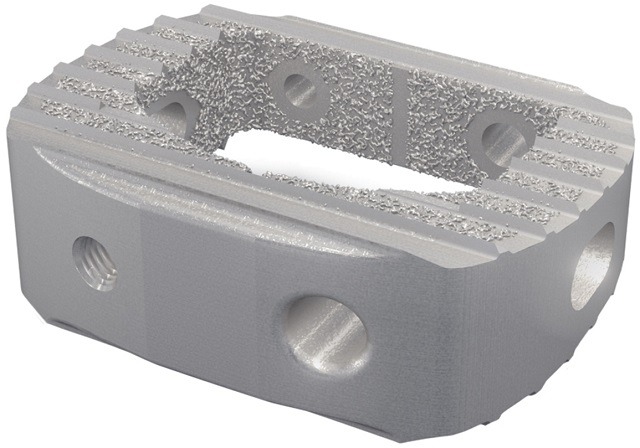
Stryker’s Tritanium C anterior cervical cage, a 3D-printed interbody fusion cage intended for use in the cervical spine, has received 510(k) clearance from the US Food and Drug Administration.
The cervical cage is constructed from Stryker’s proprietary Tritanium in-growth technology. This highly porous titanium material is designed for bone in-growth and biological fixation. According to a company release, Tritanium material may be able to wick or retain fluid, in contrast to traditional titanium.
Bradley Paddock, president of Stryker’s Spine division, says, “The benefits of additive manufacturing to create highly porous spinal implants…are becoming increasingly clear. Additive manufacturing allows us to push beyond conventional manufacturing techniques to address design complexity and achieve previously unmanufacturable geometries.”
The unique porous structure of the Tritanium material is designed to create a favourable environment for cell attachment and proliferation, as demonstrated in an in vitro study. It is inspired by the microstructure of cancellous bone and enabled by AMagine, Stryker’s proprietary approach to implant creation using additive manufacturing, also known as 3D printing.
The Tritanium C anterior cervical cage features an open central graft window and lateral windows to help reduce stiffness of the cage and minimise subsidence. In addition, the large graft window allows for bone graft containment. Engineered for stability, the cage has serrations on the superior and inferior surfaces designed for bidirectional fixation and to maximise surface area for endplate contact with the cage. Its smooth posterior edges help to facilitate insertion and protect soft tissue and anatomy. The cage is offered in a number of footprints, heights, and lordotic angles to adapt to a variety of patient anatomies. It will be available to surgeons in the fourth quarter of 2017.
The device is indicated for use in cervical interbody fusion procedures in skeletally mature patients with degenerative disc disease (DDD) at one level or two contiguous levels from the C2 to T1 disc. The cage is to be used with autogenous and/or allogenic bone graft comprised of cancellous and/or corticocancellous bone graft, and is to be implanted via an open, anterior approach.












